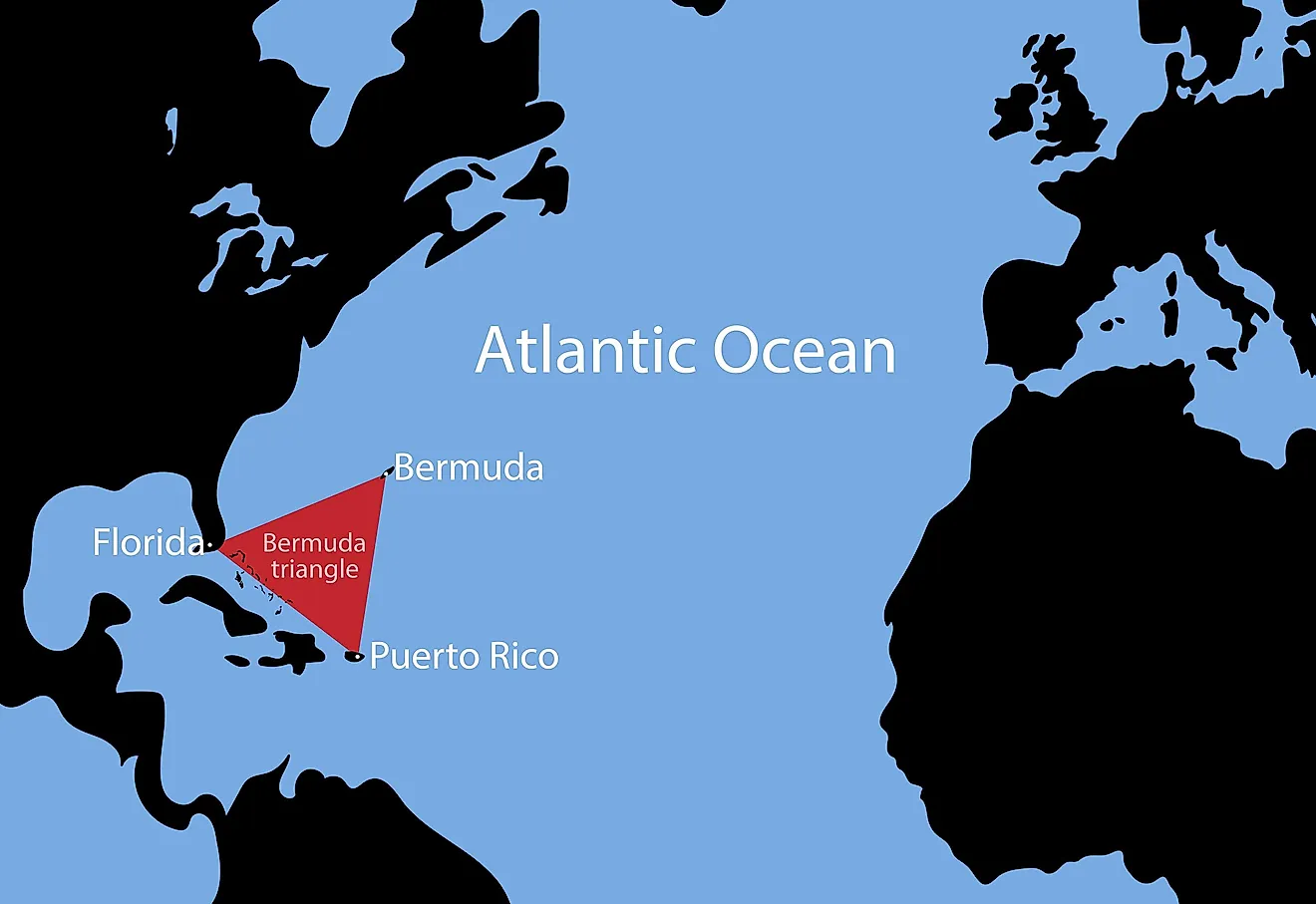Is the Bermuda Triangle Really Cursed?

The Bermuda Triangle is an imaginary area in the Atlantic Ocean regarded by many to be situated between its three corners in Miami in the United States, San Juan in Puerto Rico, and the island of Bermuda. Historically, it’s been believed to “swallow up” numerous aircraft and nautical vessels. Also informally dubbed as the "Devil’s Triangle", its size is believed to range from 500,000 to 1,500,000 square miles, depending on the definition of the triangle's boundaries.
The Bermuda Triangle is one of two places on earth, with the other being the Devil’s Sea off of Japan’s east coast, with such a mysterious navigational reputation. According to National Geographic (NG), within the triangle, the true north, and magnetic north line up and make compass readings uncertain. The Bermuda Triangle also has some of the deepest underwater trenches in the world. The seafloor there is about 5,791 meters to the bottom for the most part, while near the southern tip in the Puerto Rico Trench, the depth reaches up to 8,229 meters below sea level.
3. Historical Role
Throughout history, the Bermuda Triangle has achieved infamy for the many high profile disappearances attributed to it. The triangle was even discussed when Christopher Columbus, after sailing through the territory, wrote of erratic compass readings, according to the History Channel. But the Bermuda Triangle’s first "paranormal" casualty is believed to be Joshua Slocum, who disappeared in 1909 while sailing from Martha’s Vineyard to South America. Literature scholars attributed William Shakespeare's play “The Tempest” as being based on a real life shipwreck within the triangle centuries ago. Another disappearance in the Bermuda Triangle that captured people’s attention globally happened in March of 1918. At that time, a 542-foot-long U.S. naval cargo ship, the USS Cyclops, with over 300 men and 10,000 tons of manganese ore on board, sunk traveling between Barbados and the Chesapeake Bay. No SOS distress call was sent from the ship, and after a search it was never found. In the 1940s, several large civilian and military aircraft also vanished over the same route never to be seen again. The tragedy that lent the triangle its moniker as the “Bermuda Triangle” happened in 1945, when 5 U.S. navy bombers (Flight 19), disappeared without a trace over that same sea watery stretch. When Vincent Gaddis wrote a story for Argosy Magazine on Flight 19's disappearance, he came up with the term "Bermuda Triangle", according to National Geographic.
2. Paranormal Activity
Various myths and conspiracy theories have been spun from the tragic occurrences associated with the Bermuda Triangle. According to National Geographic accounts, ships and aircraft disappearances in the Bermuda Triangle have been associated with sea monsters, giant squids, and even extraterrestrial beings. Other theories attribute the disappearances to alien abductions, mystical ocean beings, and "Atlantic Ocean flatulence", where the ocean spews large quantities of trapped methane. Scientists who have studied the Bermuda triangle argue that strong current over the reefs breed navigational dangers. Hurricanes and the Gulf Stream prevalence in this territory have also been blamed, as have storms that create waterspouts, all of which are potentially dangerous to pilots and sailors here, according to the U.S. Coast Guard.
1. Habitat and Biodiversity
Deep sea surveys conducted at the Bermuda Triangle in 2006 uncovered over 1,000 diverse ocean organisms as far as 3 miles below the Atlantic Ocean's surface there. These included gelatinous zooplankton, tiny squids, shrimp-like creatures, and pulsating jellyfishes, according to the Woods Hole Oceanographic Institution. The zooplankton of the aquatic ecological region are vital to countering global warming, as each night they feed on carbon dioxide-absorbing phytoplankton plants, and sequester the greenhouse gas in the deep oceans as carbon and out of our atmosphere. Many small fish, like herring or anchovies, then feed on these zooplankton, as do birds and whales.











